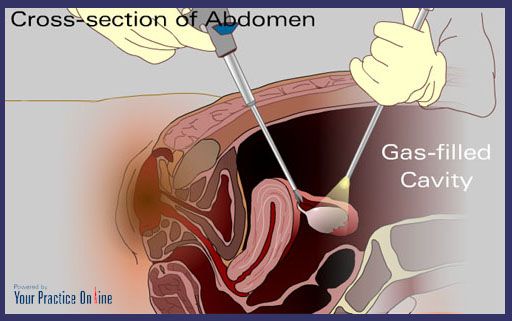Minimally Invasive Surgery- Laparoscopy.
Laparoscopy also called minimally invasive surgery or
key hole surgery is commonly performed gynecology procedure to
diagnose and treat some abdominal and
pelvic conditions.
Laparoscopy is direct visualization of the abdominal cavity using a laparoscopy. The
laparoscope is a long thin instrument with a light
source at its tip, to light up the inside of the abdomen
or pelvis. Fiberoptic fibers carry images from a lens, at the tip of the
laparoscope, to a video monitor,
which the surgeon and other theatre staff can view in
real time.

Operative setting for laparoscopy

Minimally invasive surgery aims at minimizing tissue damage to improve the recovery and surgical outcome. The other benefits of minimally invasive surgery include:
- Less blood loss
- Less post-operative pain
- Less scarring
- Shorter hospital stay
Most minimally invasive procedures are performed under local anesthesia or regional block with sedation. This has the additional advantage of preventing complications due to general anesthesia. The surgery is performed through one or more small incisions, about 1cm long. A thin, pencil-thick, instrument with a tiny camera and light source (laparoscope) is inserted through one of the incisions to transmit the images of the surgical area on a monitor. This procedure enhances the surgeon's precision, reduces the surgical trauma and improves the outcome of the procedure.
|